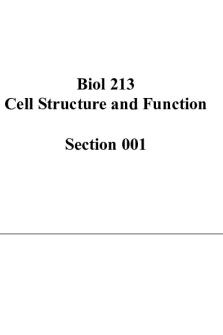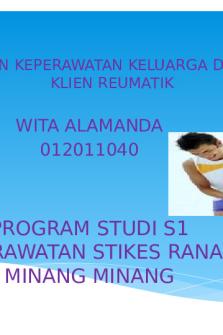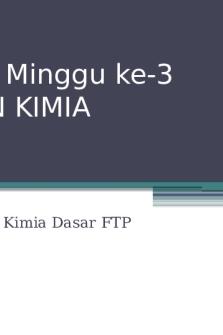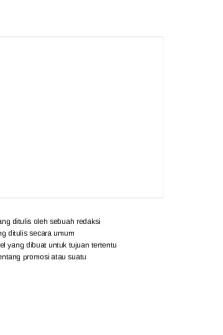Counseling theory power point instructions and layout PDF

| Title | Counseling theory power point instructions and layout |
|---|---|
| Author | Felicia Martin |
| Course | Introduction to Counseling Theories |
| Institution | Grand Canyon University |
| Pages | 3 |
| File Size | 94.2 KB |
| File Type | |
| Total Downloads | 18 |
| Total Views | 139 |
Summary
HOPE THIS HELPS SOMEONE....
Description
Week 6 PowerPoint Presentation… Imagine that you’ve been asked to complete a presentation to introduce new students to the basic differences between counseling orientations. Create a 15-20-slide PowerPoint presentation that provides an overview of each major theoretical branch of counseling and approaches within those branches. Use the following guidelines to complete your presentation: 1. Include a title, introduction, conclusion, and reference slide. (4 slides minimum) 2. Provide an overview of each theoretical framework: psychodynamic, existential-humanistic, cognitive-behavioral, and postmodern. Ensure that the reader can differentiate between these overarching theories. Consider, how does the theory conceptualize the problem and how does that lead to a solution. (4 slides minimum) 3. Discuss at least two theories/approaches and two therapeutic techniques representative of each of the four theoretical frameworks. For example, under the existential-humanistic branch you may choose to discuss Gestalt therapy and person-centered therapy. Within Gestalt you may define and demonstrate an example of "using now language" and "empty-chair" technique. (8 slides minimum) Utilize information from the textbook and the GCU library. Information from non-peer-reviewed resources (e.g., simplypsychology.com, about.com, and wikipedia) will not be accepted. Include speaker notes below each content-related slide that represent what would be said if giving the presentation in person. Expand upon the information included in the slide and do not simply restate it. While APA style is not required for the body of this assignment, solid academic writing is expected, and in-text citations and references should be presented using APA documentation guidelines, which can be found in the APA Style Guide, located in the Student Success Center. This assignment uses a rubric. Please review the rubric prior to beginning the assignment to become familiar with the expectations for successful completion. You are not required to submit this assignment to LopesWrite. Introduction: Imagine that you’ve been asked to complete a presentation to introduce new students to the basic differences between counseling orientations. The world of counseling can be befuddling at times without a good teacher, counselor, therapist etc.… Think of it like you are trying to navigate the largest, tallest hedge or corn maze you can visualize with no compass or map to guide you on your path. Now visualize a new counseling theory at each turn in the corn maze. Now consider the fact that there are literally hundreds of counseling theories in the world today though not all are still in practice and they are all from different eras. This is a brief introduction to the world of counseling and what you can do with it with proper guidance.
SLIDE 1
Title page Include my name Teachers name Class name Introduction
SLIDE 2 Do a table of contents on the topics covered in the powerpoint. This is a nice addition to the power point, but if I go over my 20 page limit it can be removed and not be totally detrimental to my grade. SLIDE 3&4-Psychodynamic theoretical framework define it maybe do a title slide where you can put the title and a definition then expand to the next slide. how does the theory conceptualize the problem and how does that lead to a solution hit the key points Do a pros and cons or a Positive part of the theory and criticism of the theory Unsure of how many slides it will take to do this Part 2) Slide 5&6- Psychodynamic theoretical framework
discuss first chosen theory provide 2 therapeutic techniques that go with it and examples of each. Discuss second chosen theory Provide 2 therapeutic techniques that go with it and examples of each.
SLIDE 7&8-Existential-Humanistic theoretical framework define it maybe do a title slide where you can put the title and a definition then expand to the next slide. how does the theory conceptualize the problem and how does that lead to a solution hit the key points Do a pros and cons or a Positive part of the theory and criticism of the theory Unsure of how many slides it will take to do this Part 2) Slide 9&10-Existential-Humanistic theoretical framework
discuss first chosen theory provide 2 therapeutic techniques that go with it and examples of each. Discuss second chosen theory Provide 2 therapeutic techniques that go with it and examples of each.
SLIDE 11&12-Cognitive-Behavioral theoretical framework
define it maybe do a title slide where you can put the title and a definition then expand to the next slide. how does the theory conceptualize the problem and how does that lead to a solution hit the key points Do a pros and cons or a Positive part of the theory and criticism of the theory Unsure of how many slides it will take to do this Part 2) Slide 13&14-Cognitive-Behavioral theoretical framework
discuss first chosen theory provide 2 therapeutic techniques that go with it and examples of each. Discuss second chosen theory Provide 2 therapeutic techniques that go with it and examples of each.
SLIDE 15&16-Postmodern theoretical framework define it maybe do a title slide where you can put the title and a definition then expand to the next slide. how does the theory conceptualize the problem and how does that lead to a solution hit the key points Do a pros and cons or a Positive part of the theory and criticism of the theory Unsure of how many slides it will take to do this Part 2) Slide 17&18-Postmodern theoretical framework
discuss first chosen theory provide 2 therapeutic techniques that go with it and examples of each. Discuss second chosen theory Provide 2 therapeutic techniques that go with it and examples of each.
(Make my own separate version with more information) Slide 19 Conclusion Slide 20 References...
Similar Free PDFs

Power Point Outline
- 1 Pages

Power Point tanya - MEDICINA
- 6 Pages

power point Ascaris lumbricoides
- 19 Pages

Power point chapter 1
- 71 Pages

Power Point 1 Introduction
- 1 Pages

Power point rematik wita
- 7 Pages

POWER POINT IKATAN KIMIA
- 27 Pages

MODUL MICROSOFT POWER POINT
- 14 Pages

Power point BULLYING
- 7 Pages

Prácticas Power Point
- 2 Pages

Microsoft Power Point E3
- 9 Pages
Popular Institutions
- Tinajero National High School - Annex
- Politeknik Caltex Riau
- Yokohama City University
- SGT University
- University of Al-Qadisiyah
- Divine Word College of Vigan
- Techniek College Rotterdam
- Universidade de Santiago
- Universiti Teknologi MARA Cawangan Johor Kampus Pasir Gudang
- Poltekkes Kemenkes Yogyakarta
- Baguio City National High School
- Colegio san marcos
- preparatoria uno
- Centro de Bachillerato Tecnológico Industrial y de Servicios No. 107
- Dalian Maritime University
- Quang Trung Secondary School
- Colegio Tecnológico en Informática
- Corporación Regional de Educación Superior
- Grupo CEDVA
- Dar Al Uloom University
- Centro de Estudios Preuniversitarios de la Universidad Nacional de Ingeniería
- 上智大学
- Aakash International School, Nuna Majara
- San Felipe Neri Catholic School
- Kang Chiao International School - New Taipei City
- Misamis Occidental National High School
- Institución Educativa Escuela Normal Juan Ladrilleros
- Kolehiyo ng Pantukan
- Batanes State College
- Instituto Continental
- Sekolah Menengah Kejuruan Kesehatan Kaltara (Tarakan)
- Colegio de La Inmaculada Concepcion - Cebu




